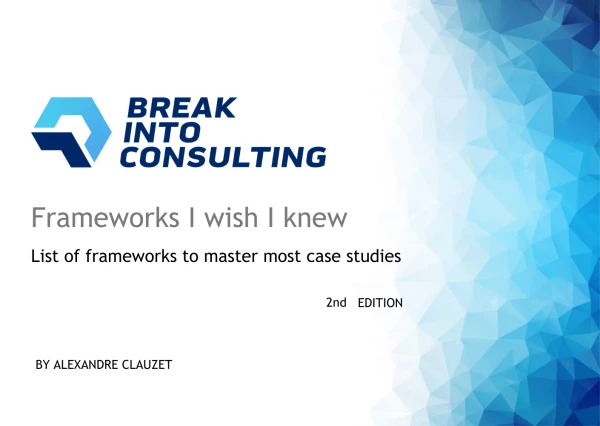Hi again!
One of the answers on my last question got me thinking about my weaknesses in past case interviews. It's about how to remain "MECE" or Mutually Exclusive and Collectively Exhaustive in my structuring during the interviews.
Can you kind folks suggest something I can do to ensure that I stay "MECE" (mutually exclusive and collectively exhaustive) in my case structuring? I find it is always not so easy...
Thanks in advance!
Levia















